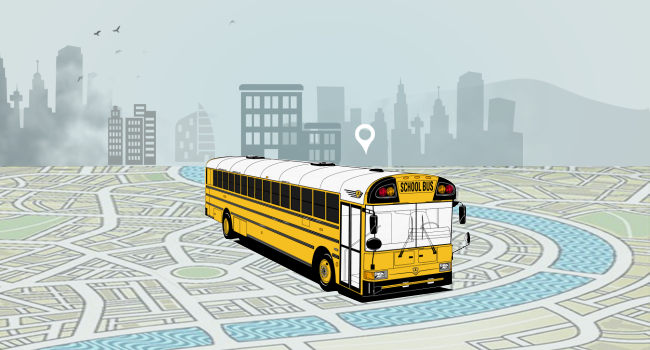There are a lot of things that can be done to ensure school bus safety. A School Bus Monitoring System or an RFID School Bus Tracking System can be used to track the school bus location and students.
But, people do not think much about the safety concerns at school bus stops. Also, the above mentioned technology cannot help to deal with them. It is up to the parents and school authorities to understand and overcome these safety threats.
Some of them include:
Location of the school bus stop
The location of the school bus stop is the primary concern while considering student safety. Sometimes, they may be in locations infamous for offences like sexual abuse, kidnap etc.
What can be done?
While planning school bus routes, schools authorities can check the location for any anomalies before finalizing it for the school bus stop. Even parents can report to the school authorities if they have any knowledge about the same. This can help in ensuring the safety of students.
Crossing lanes to reach the bus stop
Sometimes, students have to cross roads to reach the bus stop. Usually, when the school bus arrives, roads tend to be busy. Therefore, it becomes risky for the students to cross. It is the same scenario when students alight in the evening.
What can be done?
School authorities can train the school bus drivers to check the roads and signal the students to cross. In case it doesn’t work, parents and school authorities can ask the students to be a little early to their bus stops. This can prevent them from rushing when the school bus arrives. Also, ask them to look both ways before crossing the road to reach the bus stop.
Speeding vehicles at the bus stops
It’s a familiar scene where a vehicle almost flies past a school bus at the bus stop, risking the lives of students. Most accidents in school bus stops happen due to this. Though rules and regulations exist to control such situations, people rarely comply with them.
What can be done?
Ask the students to stay a few meters away from the bus until it comes to a complete stop in the morning or until it departs from the bus stop in the evening. Also, ask them not to go to the right side of the bus while it is stopped at the bus stop. School authorities must train the school bus drivers to check for the same. This can help in avoiding unwanted accidents.
Kids getting underneath the school bus
Some students have the habit of creeping under the bus without the knowledge of the school bus drivers. They fail to realize how this act of theirs can cost their lives. Unfortunately, many students have already lost their lives in such accidents.
What can be done?
Parents must make their children aware of how such unsafe practices can prove to be fatal. Also, the school authorities can train the school bus driver to get down and ensure that there is no student under the bus. If any adult is present at the bus stop, the school bus driver can ask them to ensure that there is no one underneath the vehicle.
Usage of technology cannot really eliminate the threats at school bus stops. Parents and school authorities must work together for that. Parents must talk to their kids about the measures that can be taken at the bus stop. Also, school authorities must train the drivers to take necessary steps to make sure that the students remain safe at bus stops.









